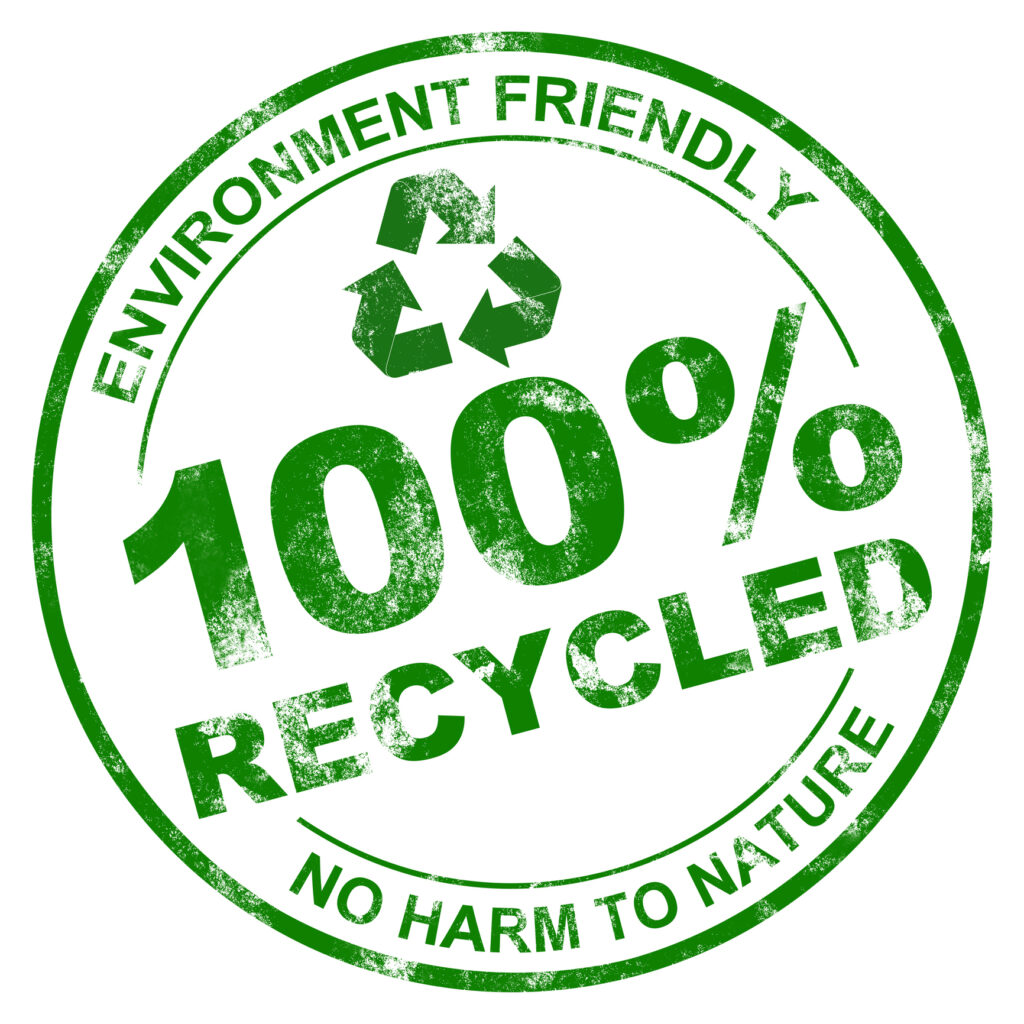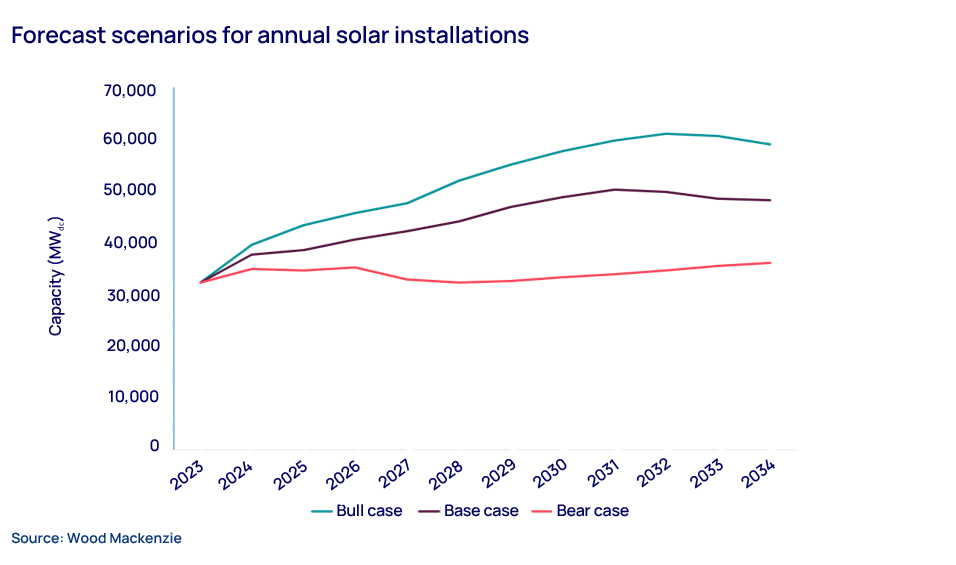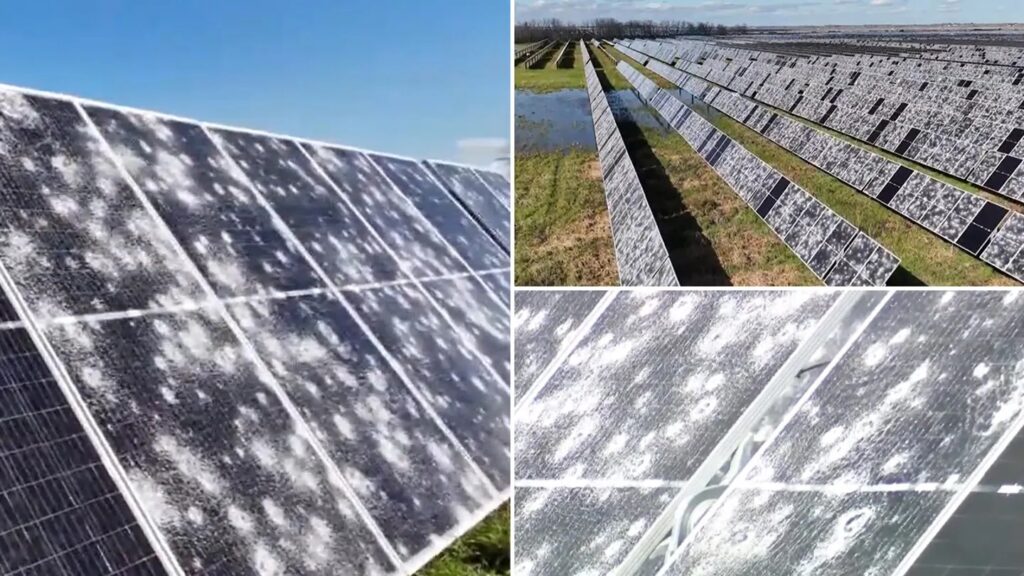Zero landfill solar panel recycling is achieved when 100% of the solar panel is recycled in the process and none of the solar panel goes to a landfill. But what do we gain as a solar industry and nation committed to accelerating a truly green, electrified energy system by committing to zero-landfill as a goal for end-of-life management of solar panels?

- First, we turn what is a hazardous waste going to landfills (in whole or in part) into a responsibly managed resource that then eliminates the environmental impact of landfills. Contaminated leachate, regardless of how marginal a threat, is a real public health risk. Even a small potential risk to human health is too much risk. We cannot continue to send solar panels to landfills.
- Second, we can grow the zero landfill solar panel recycling supply chain to help reduce the demand for virgin metals and more efficiently utilize virgin metal resources, which can in turn reduce greenhouse gas emissions associated with mining and processing when industries use recycled metals from solar panels in lieu of virgin mined resources.
- Third, zero landfill solar panel recycling ensures contamination risks have been fully eliminated in the primary recycling process, ensuring recovered material products created are safe for industrial reuse in the electrification economy.
Zero landfill solar panel recycling achieves sustainability of solar energy for everyone. It also eliminates liability concerns for industry and transparently improves ESG (Environmental, Social and Governance) performance while helping local economies grow and create new jobs. Good for the planet. Good for people. Good for industry and for bottom lines in a supply chain that shows no signs of stopping.
Solar Success Fuels the Need For Zero Landfill Solar Panel Recycling
Solar is the first renewable technology in 80 years to make up most of the new generating capacity added to the U.S. (United States) grid, representing 75% of all new electricity capacity. Solar is a leading success story in the transition to renewable energy sources, having reduced 222 million metric tons of carbon emissions. But success in solar installations has also bred the natural resource challenge of what to do with solar panels when their useful life ends.
The extreme demand for solar shows no sign of stopping, and the success has effectively reduced the price of PV by 43% within the past 10 years, fueling another 450 GW of solar expected to be installed in the U.S. (United States) in the next 10 years. As or Q1 2024, there have been over 5,000,000 solar installations, equal to 200 GW of installed capacity, equal to over 600 million solar panels already installed.

Capacity of Zero Landfill Solar Recycling Should Match The Need
The question of what happens to solar panels after their useful life (15-30 years depending on location, type) has become critical to answer as the first generation of panels approaches the end of their functional lives. In the U.S. end-of-life solar panel volume will only grow exponentially with one million metric tons (approximately 3.3 million end-of-life panels) generated conservatively in the U.S. each year by 2030, and tens of millions of end-of-life panels expected per year by 2050.
Most of this solar panel waste stream, which comes from lifespan replacements, weather damage, and breakage at installation, is coming from the early adopter sunbelt states.
High profile events such as the hailstorm outside of Houston in Fort Bend County mid-March of 2024 that destroyed a 3,000-acre solar panel facility or the 5.2-megawatt solar farm in Scottsbluff, Nebraska, which destroyed 14,000 solar panels, play a part in highlighting the problem. Though these high-profile events represent a tiny portion of the number of decommissioned solar panels that are coming due to normal attrition and aging.

Additional capacity and one-time events are also increasingly expected to come from the Midwest, Texas, the Southeast, and Northeast in addition to increasingly larger projects in the southwest. These regions are prone to severe hail risk or hot temperature variability zones, shortening solar panel life and efficiency, increasing end-of-life solar waste. (IER)1 Zero landfill end-of-life solar panel recycling is all the more important.
How Solar Panels Are Made
Solar panels primarily consist of silicon-based photovoltaic cells encased in layers of aluminum, glass, and plastic. The average solar panel comprises approximately 76% glass, 10% plastic, 8% aluminum, 5% silicon, and a fraction of other metals.
The materials used in solar panels are tightly bound together by laminates, making separation difficult and costly (for most current disposal methods). The process has historically involved mechanically crushing the panels and using chemical treatments to extract valuable materials.
Mechanical separation techniques, including shredding and milling processes, have improved some of the efficiency of material recovery, but shredding and milling these materials that effectively separate aluminum frames and glass from the photovoltaic cells without complete elimination of laminates and resultant VOCs does not ensure an environmentally sustainable downstream supply chain.
The labor-intensive and expensive nature of these prior methods have also limited expanding recycling efforts at commercial scale. Our process at Comstock Metals has overcome these economic and technical obstacles, enabling the acceleration of zero landfill solar panel recycling so we can meet the ever growing volume of end-of-life solar panels.

100% Recycling Has Arrived
At Comstock Metals, we recycle 100% of a solar panel, economically, and we have done so having eliminated 100% of the environmental risk:
- Ensuring that nothing goes to landfills and contamination risk has been eliminated.
- Ensuring we recycle and use 100% of the components from the solar panels.
- Ensuring that the costs of a 100% recycling service are economically sustainable as we scale, so we can reliably meet the needs of the end-of-life market as it grows exponentially.
For more information about our facility (link to video).
Our Solution
Media
Sources


